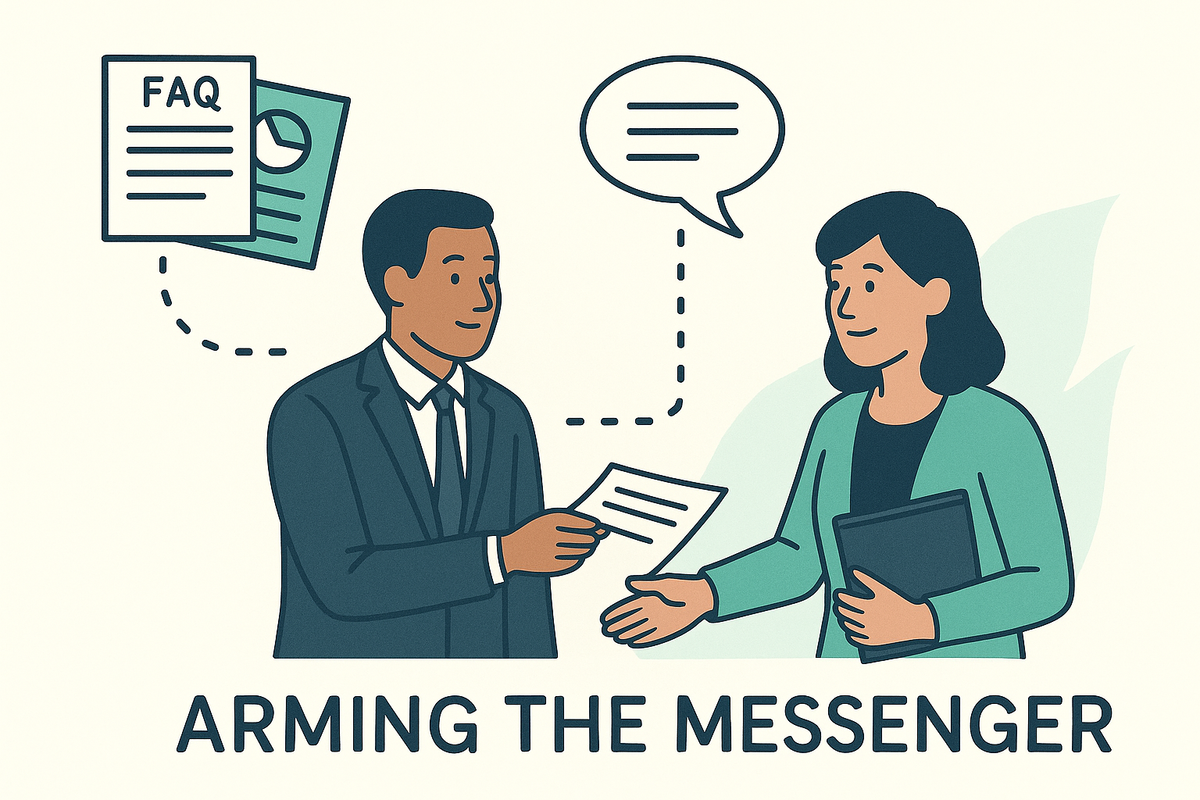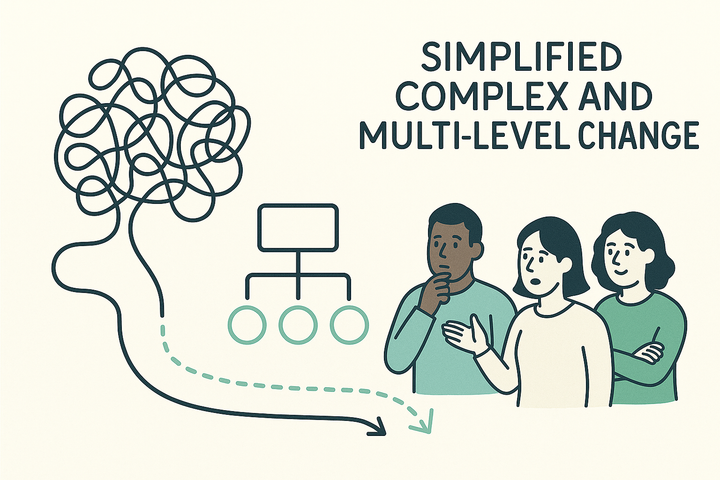Arming the Messenger – Why Managers Are Your Most Important Audience to Support Through Any Change
Most change programmes rely on managers to deliver the message — but fail to support them properly. Here’s how to arm the messenger, not abandon them.

The middle matters most
Here’s how it usually plays out.
The strategy is launched. The message is signed off. The email goes out. The intranet is updated. And then — the real work begins.
“Managers will cascade it.”
Except… the managers haven’t been properly briefed. They’re reading the email at the same time as their team. They don’t feel confident. They have questions of their own. And they’ve had no time — or support — to prepare.
In most organisations, managers sit in the middle of change. They’re expected to translate, explain, motivate, and mop up any confusion or resistance. But they’re rarely treated as a strategic audience.
That’s a mistake.
Because if your managers don’t understand it, don’t believe in it, or don’t know how to deliver it — the message won’t land.
Why managers are the messengers that matter
For most employees, the change doesn’t come from the CEO.
It comes from their line manager.
That’s the person who sets the tone, explains the implications, answers the questions and holds the space when things feel uncertain.
Managers are the first line of trust. They’re also the first place people turn when things don’t make sense.
If they’re unclear or disengaged, staff will be too.
If they seem unconvinced, staff will hold back.
If they feel underprepared, the message won’t make it through the first five minutes of questioning.
This isn’t about performance. It’s about position.
Managers are the bridge. If you don’t support the bridge, the whole structure falters.
The problem with cascade comms
Most organisations treat change communication like a waterfall. The message starts at the top, and flows down through the layers. Leaders brief comms. Comms briefs managers. Managers brief their teams. Job done.
Except, it doesn’t work.
Here’s what usually goes wrong:
- Managers receive the same message as everyone else — no extra insight
- They’re asked to deliver it instantly, with no time to prepare
- The briefing materials are too generic, too scripted, or too vague
- There’s no space for them to ask questions or express uncertainty
- No one checks whether they’ve actually delivered the message — or how it landed
You end up with miscommunication, mistrust and missed opportunities.
What managers really need during change
They need more than a slide deck. More than a script. More than “let us know if you have questions.”
They need to be armed. With context. With confidence. With the kind of practical and emotional readiness that lets them show up with clarity, authority and trust.
Here’s what that looks like:
- Early access to information — so they’re not finding out at the same time as their team
- Briefings that allow for conversation, not just download
- Permission to ask questions and personalise the message
- Tools that support real-world delivery — FAQs, talk tracks, suggested responses
- Time to process and prepare — not 20 minutes between inbox and team stand-up
- Support for their own emotions — especially if the change affects them too
- A place to feed back — so the message becomes a loop, not a drop
Most of all, they need to be treated as participants in the change, not just a channel for it.
What happens when you don’t
If you leave managers out of the loop, here’s what often happens:
- They delay the conversation until they feel more confident, or until someone chases them
- They deliver the message robotically, stripping it of context or credibility
- They rewrite the message to suit their team, with varying degrees of accuracy
- Or they avoid it altogether, leaving a vacuum filled by rumour or resistance
In every case, the result is the same: fragmentation.
Your carefully crafted message starts to splinter, taking trust and momentum with it.
What good looks like
Smart organisations treat managers as priority communicators.
They don’t “cascade” the message to them — they co-create, co-brief, and co-own the message with them.
That means:
- Involving managers in shaping the story early
- Giving them the tools to make the message their own
- Allowing them to reflect and rehearse before delivery
- Listening to their concerns — and acting on what they hear
- Recognising that their trust in the change is your strategy
When managers feel prepared and supported, they carry the message with clarity and conviction.
When they don’t, it leaks.
Final thought
Your message doesn’t land because it’s written well.
It lands because it’s delivered well by someone the audience knows, trusts and listens to.
And that’s almost always a manager.
So, stop thinking of managers as the final step in the comms chain.
Start treating them as the centre of your communication strategy.
Because if you want the message to reach your people — and stick — you need to arm the messenger.
Need help making your message manager-ready?
Start with the Sound & Signal Review — our diagnostic that shows you whether your messages are landing, where your weakest links are, and how to reinforce your internal comms network.
Or, if you're already seeing gaps in delivery, the Rapid Action Accelerator can help you reset, re-brief and realign your messengers — before the narrative slips through your fingers.



